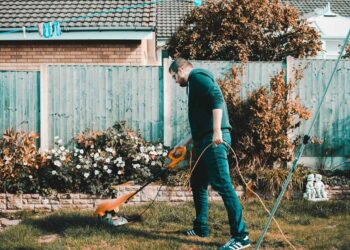As we age, our bodies change in subtle but significant ways. One of the most commonly affected areas is the lower back. Seniors often experience stiffness, discomfort, or even chronic pain in this region, prompting the question: Are lower back exercises safe for seniors? It’s an important one—and the answer is both encouraging and empowering. The short answer is yes. Lower back exercises can be very safe for seniors when done correctly and with proper guidance. In fact, they are often recommended as a first line of defense against age-related back issues. But understanding the why, how, and when of these exercises is key to doing them safely and effectively.
Understanding the Aging Spine
As we get older, the spine goes through natural wear and tear. The discs between our vertebrae lose hydration and elasticity, which can lead to reduced flexibility and cushioning. At the same time, core and back muscles tend to weaken with age, especially in people who lead sedentary lifestyles. This can contribute to poor posture, reduced stability, and increased risk of falls or injuries. That’s where targeted movement comes in. Lower back exercises, when designed with aging bodies in mind, can help maintain mobility, improve balance, and reduce the intensity of lower back pain.
Importantly, these exercises can also help improve lower back flexibility and strengthen postural muscles, which are crucial for maintaining good posture and reducing strain on the spine. But again, it all comes down to how they are done.
Why Seniors Shouldn’t Avoid Lower Back Exercises
It’s natural to feel a little hesitant about exercising when your body is already feeling sore or fragile. Many seniors ask themselves, are lower back exercises safe for seniors like me? It seems counterintuitive to move a body part that hurts. But doing nothing can often make things worse. Lack of movement leads to further weakening of the muscles that support the spine. This can intensify existing issues or create new ones. The less you move, the stiffer and more unstable your back becomes.
That’s why medical professionals often recommend safe, low-impact exercises for lower back health as part of a holistic wellness plan for older adults. Incorporating gentle movement into your daily routine can help strengthen the back, improve blood flow to the spinal area, and reduce inflammation. These are not just temporary fixes. When done consistently, lower back exercises can help seniors stay active and independent longer.
What Makes a Lower Back Exercise Safe for Seniors?
Safety in exercise is all about listening to your body, progressing at your own pace, and choosing movements that align with your current ability level. For seniors, this often means choosing exercises that are low-impact, require minimal equipment, and focus on stability and control rather than speed or intensity. For example, exercises performed while lying down, sitting in a chair, or leaning on a wall can offer great support.
Simple movements like pelvic tilts, gentle knee-to-chest stretches, and seated spinal rotations are all effective ways to engage the lower back without strain. A standing lumbar extension is another safe and beneficial exercise for seniors, helping to improve posture and relieve back tension. If you’re still wondering, are lower back exercises safe for seniors in poor health or with chronic conditions? the answer is still largely yes—but with caveats. It’s crucial to consult with a healthcare provider before starting any new exercise program, especially for those with osteoporosis, arthritis, or prior surgeries.
The Mental and Emotional Benefits of Movement
The physical advantages of lower back exercises are clear, but seniors often experience an additional boost: improved mental and emotional well-being. Moving your body, even in gentle ways, triggers the release of endorphins, also known as “feel-good” hormones. This can ease anxiety, lift your mood, and even help combat feelings of isolation that many seniors face. So when asking yourself, are lower back exercises safe for seniors, remember that the safety extends beyond physical protection. It also includes supporting mental resilience and emotional health. That holistic benefit is what makes these exercises so valuable at any stage of life.
Incorporating Lower Back Exercises into Daily Life
One of the most reassuring aspects of lower back exercises for seniors is how easy they are to integrate into a daily routine. These movements don’t require fancy gym memberships or intimidating equipment. A comfortable mat, a sturdy chair, or even your living room floor can become your exercise space. Consistency is more important than intensity. Performing a short routine of back strengthening exercises three to five times a week can yield noticeable improvements over time.
Many seniors find it helpful to do these exercises in the morning to reduce stiffness or in the evening to relax before bed. That said, progression should be slow and mindful. Start with a few simple movements and gradually build up as your body becomes more familiar and comfortable with the routine. If at any point you feel pain (not just soreness or fatigue), stop immediately and consult a professional.
Expert Opinions on Senior Fitness
Many physiotherapists and geriatric specialists advocate for routine movement as a preventative measure against age-related decline. They argue that movement is medicine, and in the case of the spine, this couldn’t be more accurate. When asked, are lower back exercises safe for seniors, most experts agree that not only are they safe, they are essential. Of course, the type and intensity of exercises matter, which is why programs tailored for seniors are the best starting point.
A good physical therapist or senior fitness coach can create a plan that accommodates any physical limitations while still improving strength and flexibility. This is especially helpful for seniors who are recovering from injury or dealing with chronic pain.
Addressing the Fear Factor
One of the biggest obstacles to starting any fitness routine later in life is fear; fear of getting hurt, of doing it wrong, or of looking silly. These fears are valid and common, but they shouldn’t be barriers to better health. Education helps dissolve fear. When seniors learn how their bodies work, why certain movements are safe, and how to modify exercises to suit their needs, confidence grows.
The question changes from are lower back exercises safe for seniors to how can I safely get started today? Having a supportive environment, whether that means a class, a video guide, or a family member joining in, can also go a long way in building that confidence. No one is expecting you to become a yoga master overnight. Even five minutes of focused movement is a powerful investment in your health.
When to Seek Medical Guidance
While lower back exercises are generally safe for seniors, it’s important to recognize when medical input is necessary. If you’re experiencing numbness, shooting pain, or mobility limitations that interfere with daily activities, get evaluated before starting any program. Conditions like severe arthritis, spinal stenosis, or herniated discs may require more customized care. In these cases, a physician may refer you to physical therapy, where exercises are supervised and adjusted as needed. But don’t let this deter you. Getting professional advice only increases your chances of success. In fact, many seniors find that starting with medically guided lower back exercises boosts their motivation and ensures long-term adherence.
The Long-Term Payoff

So, are lower back exercises safe for seniors? Absolutely. When done properly, they are not only safe but incredibly beneficial. Seniors who commit to regular lower back exercises often report better posture, fewer aches and pains, greater ease in performing daily tasks, and an overall improved sense of well-being. They also enjoy greater independence—something most of us value deeply as we age. The ability to walk, bend, lift light objects, or simply get out of a chair without discomfort is a freedom worth maintaining. These small wins add up, making a huge difference in daily life.
Moreover, consistent practice of these exercises can lead to a strong lower back, which is crucial for overall mobility and quality of life. A strong lower back can help prevent falls, improve balance, and make everyday activities much easier and more enjoyable.
Conclusion
To wrap it all up, the question are lower back exercises safe for seniors deserves a loud and clear yes. With thoughtful planning, medical input when needed, and a commitment to consistency over intensity, these exercises can become a cornerstone of healthy aging. They are not about turning back the clock, but about making the most of every day moving forward. Seniors deserve to feel strong, confident, and capable in their own bodies, and lower back exercises offer a pathway to exactly that. If you’re a senior or someone who cares for one, start small, stay consistent, and keep asking the right questions. A healthier back, a more active life, and a happier future await.



























Thank you for your sharing. I am worried that I lack creative ideas. It is your article that makes me full of hope. Thank you. But, I have a question, can you help me? https://www.binance.com/es-AR/register?ref=UT2YTZSU
I don’t think the title of your article matches the content lol. Just kidding, mainly because I had some doubts after reading the article. https://accounts.binance.info/pt-PT/register-person?ref=KDN7HDOR
Thanks for sharing. I read many of your blog posts, cool, your blog is very good. https://accounts.binance.com/si-LK/register?ref=LBF8F65G
I don’t think the title of your article matches the content lol. Just kidding, mainly because I had some doubts after reading the article.
Your point of view caught my eye and was very interesting. Thanks. I have a question for you.
Your article helped me a lot, is there any more related content? Thanks! https://www.binance.com/sl/register?ref=GQ1JXNRE
Hey Vietnam crew! Kim88vn caught my eye. Any locals playing on there? Is it legit and fun? Appreciate any feedback! kim88vn
Reading your article helped me a lot and I agree with you. But I still have some doubts, can you clarify for me? I’ll keep an eye out for your answers.
Heard some buzz about 6789club. Had a look, and it’s not bad! They’ve got some unique things going on. Worth poking around if you’re bored with the usual suspects. Good site all in all, here’s their link btw: 6789club.
Alright, giving AE888L1 a shot. User experience is pretty smooth, and the bonus they offered was tempting. We’ll see how the withdrawals go! Give it a try: ae888l1
Kingjililogin made it super easy to create an account and jump into the action. No messing around. The site is fast, and it runs smoothly on my phone. Thumbs up! Head over to kingjililogin.
Just logged into q88dangnhap the other day. The interface is clean, and navigating is a breeze. Give q88dangnhap a shot! q88dangnhap
Thanks for sharing. I read many of your blog posts, cool, your blog is very good.
Thank you for your sharing. I am worried that I lack creative ideas. It is your article that makes me full of hope. Thank you. But, I have a question, can you help me? https://accounts.binance.com/sl/register-person?ref=I3OM7SCZ